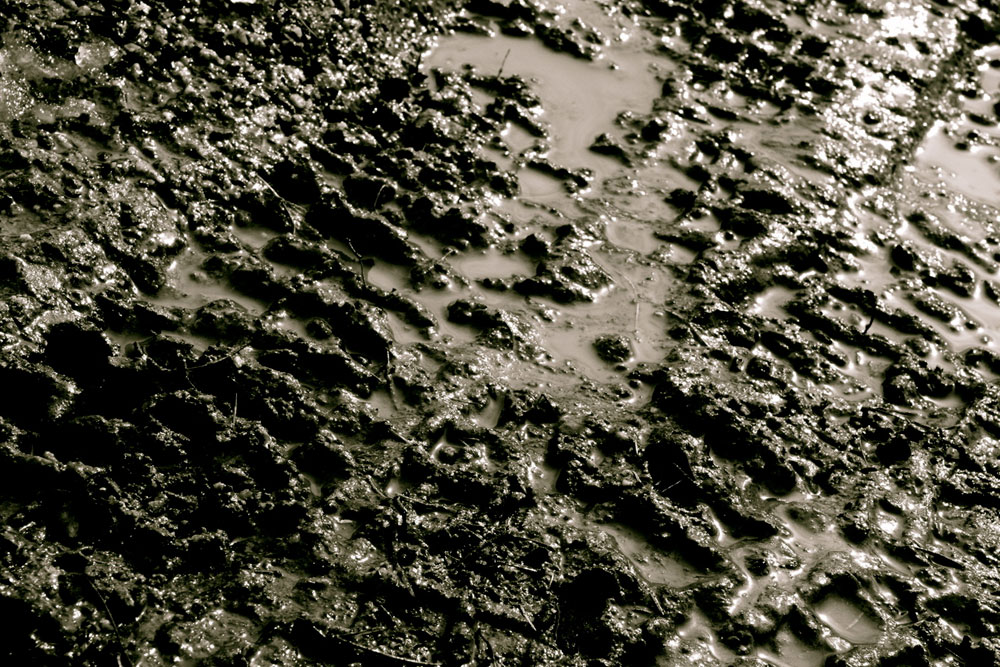It is either a major “oh crap” or a big “cool!” when encountered on a trail, and while mud can be one of the most challenging terrains to traverse, it can also be one of the most fun to go driving in. However, careless driving can also cause a lot of damage to the trail and to your vehicle. Mud is a great teacher of vehicle dynamics and risk versus reward, without being too risky. The key is traction, traction, traction. Mud comes in all forms-thin and watery, deep and gooey, soft and sticky with a hard crust on top, and mud techniques can change depending on the type of mud you encounter. There are some basic tips for mud that are similar to sand or snow driving, but it is its own beast and you should be sure to have a good understanding of it before you attempt it. Some of the pitfalls in mud can be a change in consistency, hidden debris and deep holes, and as the old adage goes, “drive as slow as possible and fast as necessary.” We are pretty sure this was written for mud. So what do you do when you either want to go muddin’, or it is your only choice moving forward? We aren’t going to focus on building for mud, as that is covered elsewhere in the issue, but if you can relate more to the “oh crap” group, here are some tips that can be applied to any vehicle. 1. Never Wheel Alone Wheeling alone is dangerous and can turn an inconvenient “stuck” in to a survival situation in no time. Always carry recovery gear, know the limitations of your vehicle, yourself, and the group you are traveling with, and be smart on the trail. A little common sense goes a long way. 2. Air Down Dropping the pressure of your tires will increase traction and surface area, but realize you will lose some ground clearance for those deeper bogs. 3. Use Four Wheel Drive Enter the mud in low-range for maximum torque. It is better to be in four-wheel drive before you need it, because sometimes you’ll find that it is too late to engage the front axle. 4. Pick A Line And Stick To It If possible, watch others go through before you or poke the mud with a stick to gauge depth and consistency. A little bit of recon can mean the difference between making it home on time for dinner, or a mud-caked pair of new boots. Try to stay as straight as possible, as lots of steering inputs can cause drag and loss of momentum. 5. Steady As She Goes Only experience can truly teach you this, but the goal is to be steady enough on the throttle to carry momentum forward and have enough wheelspin to self-clean the tread without having so much throttle that you dig yourself a hole you can’t drive out of. 6. Avoid Ruts When it comes to mud, you’re better off choosing you your own path as deep ruts take steering control out of your hands, can hold wetter, softer mud, and increase the amount of ground clearance your vehicle needs to traverse it. 7. Don’t Brake If the tires start to spin without aiding forward progress, apply less throttle only as needed and increase throttle when the tires start to grab again. If you enter a front wheel skid where your steering inputs no longer matter and your rear is trying to swap with your front, get off the gas. Do not use your brakes in mud, and don’t stop until you are clear of the mud. 8. Always Know Where Your Wheels Are Pointed As the coefficient of traction changes, it could cause a turned wheel to grab and throw the vehicle out of the line or into an obstacle. 9. Be Creative If momentum starts to cease, “saw” the steering wheel back and forth to try and grab traction. If you are stopped, don’t be afraid to back up, or rock the vehicle back and forth. As long as you can move at all in any direction, you are not stuck. 10. Realize When You Are Stuck If you lose momentum and wheelspin doesn’t clear the treads and sawing your tires back and forth doesn’t work, and you are only going down instead of forward, stop while you are ahead and prepare for a recovery situation. 11. Hose It Off Clean it when you are done. As mud dries, it can cause all sorts of problems with wheel and driveline balance as well as break components. Its extra weight can also lower fuel economy and shorten braking distances, while it makes working under the rig a mess. We have also been through very acidic mud that starts to rust frames and other metal parts within days of drying. 12. Replace Fluids No matter how well your rig is sealed, water and mud will always find a way to foul your fluids and wreak havoc on your components. After any mud run, it is important to repack wheel bearings as well as change any affected fluids, including the tranny, transfer case, and differentials.







